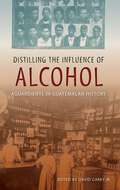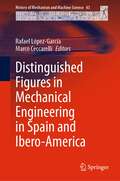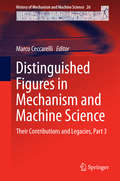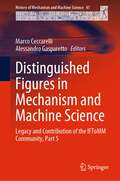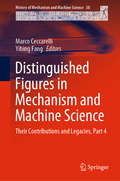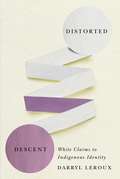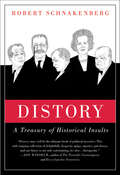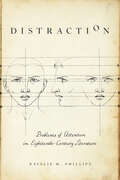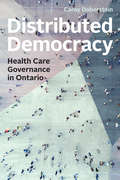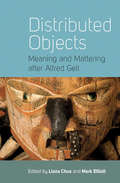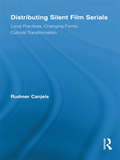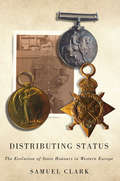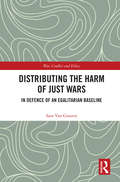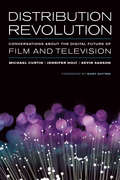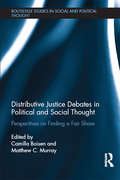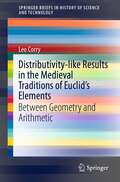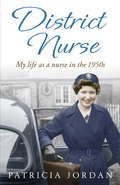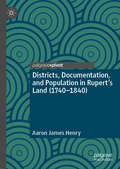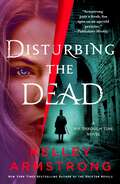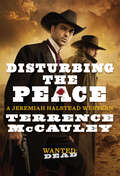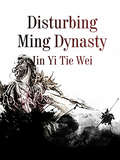- Table View
- List View
Distilling the Influence of Alcohol: Aguardiente in Guatemalan History
by David CareySugar, coffee, corn, and chocolate have long dominated the study of Central American commerce, and researchers tend to overlook one other equally significant commodity: alcohol. Often illicitly produced and consumed, aguardiente (distilled sugar cane spirits or rum) was central to Guatemalan daily life, though scholars have often neglected its fundamental role in the country's development. Throughout world history, alcohol has helped build family livelihoods, boost local economies, and forge nations. The alcohol economy also helped shape Guatemala's turbulent categories of ethnicity, race, class, and gender, as these essays demonstrate. Established and emerging Guatemalan historians investigate aguardiente's role from the colonial era to the twentieth century, drawing from archival documents, oral histories, and ethnographic sources. Topics include women in the alcohol trade, taverns as places of social unrest, and tension between Maya and State authority. By tracing Guatemala's past, people, and national development through the channel of an alcoholic beverage, Distilling the Influence of Alcohol opens new directions for Central American historical and anthropological research.
Distinguished Figures in Mechanical Engineering in Spain and Ibero-America (History of Mechanism and Machine Science #43)
by Marco Ceccarelli Rafael López-GarcíaThis volume collects contributions on leading figures in mechanism and machine science (MMS) from Spain and Ibero-America over the last two centuries. The contributions examine scientists whose work resulted in relevant technical-scientific achievements, with an impact on technology and science in the historical evolution of MMS fields, and with an influence on the development of society at large. Biographical notes describing the efforts and achievements of these persons are included as well, but a technical survey is the core of each chapter, offering a modern interpretation of their legacy.
Distinguished Figures in Mechanism and Machine Science
by Marco CeccarelliThis is the second volume of a series of edited books whose aim is to collect contributed papers in a frame that can be a sort of dictionary of personalities in MMS (Mechanism and Machine Science). The papers will illustrate personalities by recognizing persons and their activity, by looking mainly at technical developments in the historical evolution of the fields that today are grouped in MMS. Thus, emphasis will be addressed also to biographical notes to describe efforts and experiences of people who have contributed to the technical achievements whose survey is the core of each contributed paper. It is a unique perspective for technical experts to go further in-depth into the historical background of their topics of expertise. This second volume of the dictionary project has been possible thanks to the invited authors who have enthusiastically shared the initiative and prepared the papers with joint characteristics of survey and historical notes. These papers cover the wide field of the History of Mechanical Engineering with specific focus on MMS. Readers can benefit from the papers in this book and future ones with further satisfaction and motivation for her or his own work (historical or not).
Distinguished Figures in Mechanism and Machine Science: Legacy and Contribution of the IFToMM Community, Part 5 (History of Mechanism and Machine Science #41)
by Marco Ceccarelli Alessandro GasparettoThis book discusses the technological developments achieved by distinguished figures in the history of mechanism and machine science (MMS). This is the fifth volume of a series of books which gathered contributions on the leading scientists in the field. This book focuses specifically on the IFToMM community and its activities over the last 50 years, showcases who-is-who in MMS, and emphasizes—together with the previous books of the series—the significance of MMS through time. Each chapter recognizes persons whose scientific work resulted in relevant technical developments in the historical evolution of MMS within IFToMM. Biographical notes describing the efforts and achievements of these persons are included as well, but a technical survey is the core of each chapter, offering a modern interpretation of their legacy.
Distinguished Figures in Mechanism and Machine Science: Their Contributions and Legacies, Part 4 (History of Mechanism and Machine Science #38)
by Marco Ceccarelli Yibing FangThis book discusses technological developments by distinguished figures in the history of MMS (mechanism and machine science). It includes biographies of well-known scientists, describing their efforts, experiences and achievements and offering a modern interpretation of their legacy. This volume includes scientists from a wide range of time periods, academic disciplines, and geographical backgrounds, such as Giovanni Bianchi, Homer, Taqi Al-Din, Jacques de Vaucanson, Ma Jun, Xu Baosheng, Alexander Alexandrovich Golovin, Francesco di Giorgio and Cesare Rossi. Covering a wide range of figures within the field of history of mechanical engineering, with a particular focus on MMS, this fourth volume is of interest to, and will inspire the work (historical or not) of many.
Distorted Descent: White Claims to Indigenous Identity
by Darryl LerouxDistorted Descent examines a social phenomenon that has taken off in the twenty-first century: otherwise white, French descendant settlers in Canada shifting into a self-defined “Indigenous” identity. This study is not about individuals who have been dispossessed by colonial policies, or the multi-generational efforts to reconnect that occur in response. Rather, it is about white, French-descendant people discovering an Indigenous ancestor born 300 to 375 years ago through genealogy and using that ancestor as the sole basis for an eventual shift into an “Indigenous” identity today. After setting out the most common genealogical practices that facilitate race shifting, Leroux examines two of the most prominent self-identified “Indigenous” organizations currently operating in Quebec. Both organizations have their origins in committed opposition to Indigenous land and territorial negotiations, and both encourage the use of suspect genealogical practices. Distorted Descent brings to light to how these claims to an “Indigenous” identity are then used politically to oppose actual, living Indigenous peoples, exposing along the way the shifting politics of whiteness, white settler colonialism, and white supremacy.
Distory: A Treasury of Historical Insults
by Robert SchnakenbergDistory: A Treasury of Historical Insults is a hilarious collection of insulting historical quotations in the vein of The Portable Curmudgeon that will have history buffs and readers of humor books in stitches. Full of lively quips, jabs, jaunts and put downs by and about notable figures, it covers all epochs of mostly Western history. Schnakenberg has collected more than 600 historical insults into this first collection of its kind.Included:"A German singer! I should as soon expect to get pleasure from the neighing of my horse."- Alexander the Great"Belgium is just a country invented by the British to annoy the French." - Charles de Gaulle"What can you do with a man who looks like a female llama surprised when bathing?"- Winston Churchill on Charles de Gaulle"Jerry Ford is so dumb he can't fart and chew gum at the same time." - Lyndon B. Johnson"Avoid all needle drugs - -the only dope worth shooting is Richard Nixon." - Abbie Hoffman
Distraction: Problems of Attention in Eighteenth-Century Literature
by Natalie M. PhillipsEnlightenment writers fiercely debated the nature of distraction in literature.Early novel reading typically conjures images of rapt readers in quiet rooms, but commentators at the time described reading as a fraught activity, one occurring amidst a distracting cacophony that included sloshing chamber pots and wailing street vendors. Auditory distractions were compounded by literary ones as falling paper costs led to an explosion of print material, forcing prose fiction to compete with a dizzying array of essays, poems, sermons, and histories. In Distraction, Natalie M. Phillips argues that prominent Enlightenment authors—from Jane Austen and William Godwin to Eliza Haywood and Samuel Johnson—were deeply engaged with debates about the wandering mind, even if they were not equally concerned about the problem of distractibility.Phillips explains that some novelists in the 1700s—viewing distraction as a dangerous wandering from singular attention that could lead to sin or even madness—attempted to reform diverted readers. Johnson and Haywood, for example, worried that contemporary readers would only focus long enough to "look into the first pages" of essays and novels; Austen offered wry commentary on the issue through the creation of the daft Lydia Bennet, a character with an attention span so short she could listen only "half-a-minute." Other authors radically redefined distraction as an excellent quality of mind, aligning the multiplicity of divided focus with the spontaneous creation of new thought. Laurence Sterne’s Tristram Shandy, for example, won audiences with its comically distracted narrator and uniquely digressive form.Using cognitive science as a framework to explore the intertwined history of mental states, philosophy, science, and literary forms, Phillips explains how arguments about the diverted mind made their way into the century’s most celebrated literature. She also draws a direct link between the disparate theories of focus articulated in eighteenth-century literature and modern experiments in neuroscience, revealing that contemporary questions surrounding short attention spans are grounded in long conversations over the nature and limits of focus.
Distributed Democracy: Health Care Governance in Ontario (IPAC Series in Public Management and Governance)
by Carey DobersteinThe governance of health care in Ontario has long provided opportunities for citizens and stakeholders to participate, deliberate, and influence health care policy and investment decisions. Yet, despite providing opportunities for deliberation and influence amongst citizens, we don’t know how democratic the system actually is. Distributed Democracy advances an original analytical framework to guide an investigation of democracy and accountability relationships in complex policy making environments. Applying the analytical framework in the context of health care governance in Ontario from 2004–2019, Carey Doberstein shows that the popular criticisms of health care governance in Ontario are misplaced. The democratic system of local health care governance is often plagued by severed connections among the various layers of deliberation and policy-making. An incisive analysis with considerable relevance for policy-makers and across academic disciplines, Distributed Democracy makes an important contribution to our understanding of policy development and decision-making as well as the limitations and potential of distributed democratic accountability.
Distributed Objects
by Mark Elliott Liana ChuaOne of the most influential anthropological works of the last two decades, Alfred Gell's Art and Agency is a provocative and ambitious work that both challenged and reshaped anthropological understandings of art, agency, creativity and the social. It has become a touchstone in contemporary artifact-based scholarship. This volume brings together leading anthropologists, archaeologists, art historians and other scholars into an interdisciplinary dialogue with Art and Agency, generating a timely re-engagement with the themes, issues and arguments at the heart of Gell's work, which remains salient, and controversial, in the social sciences and humanities. Extending his theory into new territory - from music to literary technology and ontology to technological change - the contributors do not simply take stock, but also provoke, critically reassessing this important work while using it to challenge conceptual and disciplinary boundaries.
Distributing Silent Film Serials: Local Practices, Changing Forms, Cultural Transformation (Routledge Advances in Film Studies)
by Rudmer CanjelsTracing the international consumption, distribution, and cultural importance of silent film serials in the 1910s and 1920s, Canjels provides an exciting new understanding of the cultural dimension and the cultural transformation and circulation of media forms. Specifically, he demonstrates that the serial film form goes far beyond the well-known American two-reel serial—the cliffhanger. Throughout the book, Canjels focuses on the biggest producers of serials, America, France, and Germany, while imported serials, such as those in the Netherlands, are also examined. This research offers new views on the serial work of well known directors as D.W. Griffith, Abel Gance, Erich von Stroheim, and Fritz Lang, while foregrounding the importance of lesser known directors such as Louis Feuillade or Joe May. In the early twentieth-century, serial productions were constantly undergoing change and were not merely distributed in their original form upon import. As adjusted serials were present in large quantities or confronted different social spaces, nationalistic feelings and views stimulated by the unrest of World War I and the expanding American film industry could be incorporated and attached to the serial form. Serial productions were not only adaptable to local discourses, they could actively stimulate and interact as well, influencing reception and further film production. By examining the distribution, reception, and cultural contexts of American and European serials in various countries, this cross-cultural research makes both local and global observations. Canjels thus offers a highly relevant case study of transnational, transcultural and transmedia relations.
Distributing Status: The Evolution of State Honours in Western Europe
by Samuel ClarkHonorific rewards are all about status and illustrate status processes in a way that few other social phenomena do. Why do we have so many honorific awards and prizes? Although they are a major feature of modern societies, they have received little scholarly attention. Samuel Clark argues that answering this question requires a separate historical analysis of different awards and prizes. He presents a comprehensive explanation of the origins and evolution of state honours in the British Isles, France, and the Low Countries. Examining cultural, social, and political changes that led to the massive growth in state honours and shaped their characteristics, Distributing Status also demonstrates their functions as instruments of cultural power, collective power, disciplinary power, and status power. Clark supports his conclusions with a cross-cultural statistical analysis of twenty societies. Lucid and logical, Distributing Status explicates an important historical change in Western Europe while at the same time contributing to several bodies of sociological literature, including evolutionary theory, theories of collective action, writings on discipline in modern societies, and studies of status processes.
Distributing Status: The Evolution of State Honours in Western Europe
by Samuel ClarkHonorific rewards are all about status and illustrate status processes in a way that few other social phenomena do. Why do we have so many honorific awards and prizes? Although they are a major feature of modern societies, they have received little scholarly attention. Samuel Clark argues that answering this question requires a separate historical analysis of different awards and prizes. He presents a comprehensive explanation of the origins and evolution of state honours in the British Isles, France, and the Low Countries. Examining cultural, social, and political changes that led to the massive growth in state honours and shaped their characteristics, Distributing Status also demonstrates their functions as instruments of cultural power, collective power, disciplinary power, and status power. Clark supports his conclusions with a cross-cultural statistical analysis of twenty societies. Lucid and logical, Distributing Status explicates an important historical change in Western Europe while at the same time contributing to several bodies of sociological literature, including evolutionary theory, theories of collective action, writings on discipline in modern societies, and studies of status processes.
Distributing the Harm of Just Wars: In Defence of an Egalitarian Baseline Approach (War, Conflict and Ethics)
by Sara Van GoozenThis book argues that the risk of harm in armed conflict should be divided equally between combatants and enemy non-combatants. International law requires that combatants in war take ‘all feasible precautions’ to minimize damage to civilian objects, injury to civilians, and incidental loss of civilian life. However, there is no clear explanation of what ‘feasible precautions’ means in this context, or what would count as sufficiently minimised incidental harm. As a result, it is difficult to judge whether a particular war or offensive actually satisfies this requirement. Just war theorists often consider it common sense that merely not intending to harm innocent civilians is not sufficient, but there is little clarity in the literature regarding what this means. One crucial question that is almost always overlooked is that of what the appropriate baseline distribution of risk should be. This book defends the Minimal Harm Requirement (MHR), which states that combatants should make an effort to reduce merely foreseen harm to enemy non-combatants to the lowest reasonable level. In order to assess which risk impositions are reasonable, and which are not, an egalitarian baseline should be adopted, suggesting that other things being equal risk of harm should be distributed equally between just combatants and unjust non-combatants. This book will be of much interest to students of just war theory, ethics, security studies and international relations.
Distribution Revolution
by Jennifer Holt Kevin Sanson Michael CurtinDistribution Revolution is a collection of interviews with leading film and TV professionals concerning the many ways that digital delivery systems are transforming the entertainment business. These interviews provide lively insider accounts from studio executives, distribution professionals, and creative talent of the tumultuous transformation of film and TV in the digital era. The first section features interviews with top executives at major Hollywood studios, providing a window into the big-picture concerns of media conglomerates with respect to changing business models, revenue streams, and audience behaviors. The second focuses on innovative enterprises that are providing path-breaking models for new modes of content creation, curation, and distribution--creatively meshing the strategies and practices of Hollywood and Silicon Valley. And the final section offers insights from creative talent whose professional practices, compensation, and everyday working conditions have been transformed over the past ten years. Taken together, these interviews demonstrate that virtually every aspect of the film and television businesses is being affected by the digital distribution revolution, a revolution that has likely just begun. Interviewees include: * Gary Newman, Chairman, 20th Century Fox Television * Kelly Summers, Former Vice President, Global Business Development and New Media Strategy, Walt Disney Studios * Thomas Gewecke, Chief Digital Officer and Executive Vice President, Strategy and Business Development, Warner Bros. Entertainment * Ted Sarandos, Chief Content Officer, Netflix * Felicia D. Henderson, Writer-Producer, Soul Food, Gossip Girl * Dick Wolf, Executive Producer and Creator, Law & Order
Distributive Justice Debates in Political and Social Thought: Perspectives on Finding a Fair Share (Routledge Studies in Social and Political Thought)
by Camilla Boisen and C. Murray MatthewWho has what and why in our societies is a pressing issue that has prompted explanation and exposition by philosophers, politicians and jurists for as long as societies and intellectuals have existed. It is a primary issue for a society to tackle this and these answers have been diverse. This collection of essays approaches some of these questions and answers to shed light on neglected approaches to issues of distribution and how these issues have been dealt with historically, socially, conceptually, and practically. The volume moves away from the more dominating and traditionally cast understandings of distributive justice and shows novel and unique ways to approach distributive issues and how these can help enlighten our course of action and thought today by creating new pathways of understanding. The editors and contributors challenge readers by exploring the role and importance of restorative justice within distributive justice, exploring the long shadow of practices of trusteeship, and concepts of social and individual rights and obligations in welfare and economic systems, social protection/provision schemes, egalitarian practices and post-colonial African political thought. Distributive Justice Debates in Political and Social Thought empowers the reader to cast a more critical and historically complete light on the idea of a fair share and the implications it has on societies and the individuals who comprise them.
Distributivity-like Results in the Medieval Traditions of Euclid's Elements: Between Geometry and Arithmetic (SpringerBriefs in History of Science and Technology)
by Leo CorryThis book provides a fresh view on an important and largely overlooked aspect of the Euclidean traditions in the medieval mathematical texts, particularly concerning the interrelations between geometry and arithmetic, and the rise of algebraic modes of thought. It appeals to anyone interested in the history of mathematics in general and in history of medieval and early modern science.
District Nurse
by Patricia JordanIn the bestselling tradition of Call the Midwife, an honest and moving account of working as a district nurse in 1950s England.Born in Belfast, Patricia Jordan left for England to train as a nurse in the 1940s and DISTRICT NURSE is her moving and humorous account of life as a visiting nurse in a small English town. She leaves behind a close-knit family and a failed romance in Ireland to begin training in Barnet and Middlesex. She early on treats a patient who eventually becomes her husband and means that she accepts a job in the north of England that takes her first by bicycle and then in an unreliable little car, into the homes of the people who need her care.In DISTRICT NURSE, she brings to life everyone she encounters, from the doctors and other nurses to the diverse and always compelling patients. It is a captivating personal account of a life spent helping others.
District Nurse
by Patricia JordanIn the bestselling tradition of Call the Midwife, an honest and moving account of working as a district nurse in 1950s England.Born in Belfast, Patricia Jordan left for England to train as a nurse in the 1940s and DISTRICT NURSE is her moving and humorous account of life as a visiting nurse in a small English town. She leaves behind a close-knit family and a failed romance in Ireland to begin training in Barnet and Middlesex. She early on treats a patient who eventually becomes her husband and means that she accepts a job in the north of England that takes her first by bicycle and then in an unreliable little car, into the homes of the people who need her care.In DISTRICT NURSE, she brings to life everyone she encounters, from the doctors and other nurses to the diverse and always compelling patients. It is a captivating personal account of a life spent helping others.
Districts, Documentation, and Population in Rupert’s Land (1740–1840)
by Aaron James HenryThis book interrogates how districts were used in British North America to inspect, and document indigenous people by the Hudson’s Bay Company (HBC). In particular, it examines how the HBC utilized districts to create a political geography that allowed for closer surveillance of indigenous people and stabilized debt. An initial examination of how the district was used to rework earlier 18th-century conducts of observation into the more ordered and spatially limited regime of inspection is undertaken, followed by an investigation of how the district became central to the HBC’s efforts to limit the movement of indigenous people, individualize hunters, and spur ‘industriousness’. The book points to how districts became key to a number of colonial projects, laying the infrastructure for the modern reserve system in Canada. In this sense, the book provides a critical genealogy of how the command of space and social vision shaped Canada’s colonial geography.
Disturbing the Dead: A Rip Through Time Novel (Rip Through Time Novels #3)
by Kelley ArmstrongDisturbing the Dead is the latest in a unique series with one foot in the 1860s and the other in the present day. The Rip Through Time crime novels are a genre-blending, atmospheric romp from New York Times bestselling author Kelley Armstrong.Victorian Scotland is becoming less strange to modern-day homicide detective Mallory Atkinson. Though inhabiting someone else’s body will always be unsettling, even if her employers know that she’s not actually housemaid Catriona Mitchell, ever since the night both of them were attacked in the same dark alley 150 years apart. Mallory likes her job as assistant to undertaker/medical examiner Dr. Duncan Gray, and is developing true friends—and feelings—in this century.So, understanding the Victorian fascination with death, Mallory isn't that surprised when she and her friends are invited to a mummy unwrapping at the home of Sir Alastair Christie. When their host is missing when it comes time to unwrap the mummy, Gray and Mallory are asked to step in. And upon closer inspection, it’s not a mummy they’ve unwrapped, but a much more modern body.
Disturbing the Peace (A Jeremiah Halstead Western #2)
by Terrence McCauley&“McCauley's Westerns move at a pace that leaves readers sweating and out of breath. Blood on the Trail is one wild, entertaining ride.&” —Johnny D. BoggsDeputy U.S. Marshal Jeremiah Halstead keeps the peace in the mining town of Silver Cloud, Montana. But an old enemy has declared war against him. Ruthless and clever, Ed Zimmerman would have become the leader of one of the west&’s deadliest and hell-bent outlaw gangs. Zimmerman has offered a generous bounty to every desperado willing to put a bullet through the U.S. Deputy Marshal&’s heart. A death sentence won&’t stop Halstead from enforcing the law. The sheriff of Battle Brook needs a hand dealing with some hell-raising badmen in the surrounding hills, threatening to take over the frontier town. Joined by Deputy Sandborne, Halstead rides hard for Battle Brook only to discover manhunters aware of the price on his head are in town, guns cocked and ready to collect the reward. And Zimmerman has joined the outlaws in the hills, waiting to catch Halstead in his sights. . . Praise for Terrence McCauley&’s Where the Bullets Fly &“Imagine a spaghetti Western with flawed characters and nonstop action. OrRooster Cogburn, without the eyepatch and a whole lot meaner.&” —Roundup Magazine&“Blood on the Trail is one action-packed, western . . . and Jeremiah Halstead is a lawdog to fog the outlaw trail with!&” —Peter Brandvold, author of The Cost of Dying
Disturbing the Peace: A Conversation with Karel Huizdala
by Paul Wilson Václav HavelA book-length interview with Vaclav Havel giving an intimate history of Czechoslovakia under communism; a meditation on the social and political role of art, and a triumphant statement of the values underlying all the recent revolutions in Central and Eastern Europe.
Disturbing the Universe
by Freeman DysonWhile the focus of this book is a biography of the physicist Freeman Dyson up till about 1980, the side stories and range of people and projects he became involved in make this book a galaxy spanning story. From analyzing British bomber activity in WW II to meeting Hans Bethe and Richard Feynman when he was just trying to figure out what he wanted as a career, to helping design a nuclear starship to work on nuclear arms control, to the intersection of physics and biology, along with the poetry and stories that inspired him and the activities of his own family, the story expands to fill an amazing volume.
Disturbing Ming Dynasty (Volume 1 #1)
by Jinyi TieweiDuring the Yongle years, Zhong Yue, who carried a blood feud with him, returned to Nanjing and used Shen Ji Workshop, who knew everything about the affairs of the world, to befriend the royal family and carry out his revenge plan. He was an elegant man, had great kung fu skills, and had countless fortuitous encounters. Three emperors died at his hands, and the empress became his lover. In the end, his son sat on the throne …
